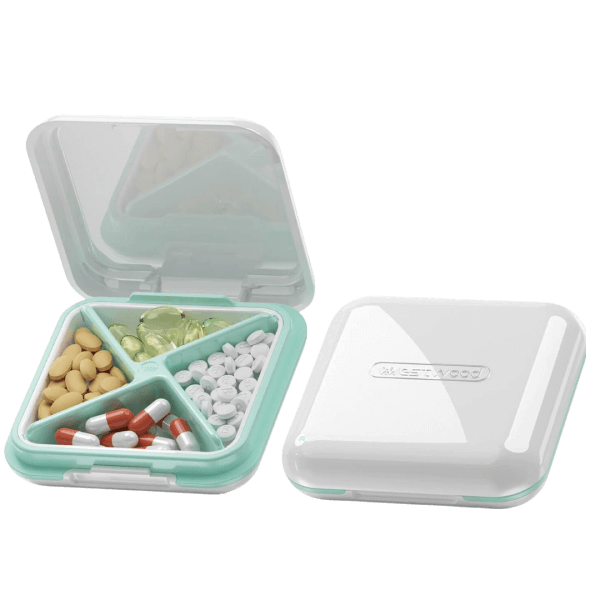Preeclampsia is a serious medical condition that can occur during pregnancy. It is characterized by high blood pressure and other signs, such as protein in the urine. If left untreated, preeclampsia can lead to potentially life-threatening complications for both mother and baby. One of the most common complications associated with preeclampsia is cardiovascular disease (CVD). In this blog post, we’ll discuss the rate of CVD associated with pregnancy-related hypertensive disorders. Hypertensive disorders during pregnancy are classified into 4 categories, as recommended by the National High Blood Pressure Education Program Working Group on High Blood Pressure in Pregnancy: 1) chronic hypertension, 2) preeclampsia-eclampsia, 3) preeclampsia superimposed on chronic hypertension, and 4) gestational hypertension

What is Cardiovascular Disease?
Cardiovascular disease (CVD) is a type of chronic illness that affects your heart, blood vessels, and circulation or blood flow throughout the body. It occurs when plaque builds up in your arteries and restricts the flow of oxygen-rich blood to your organs. Over time, CVD can lead to heart attack, stroke, and even death.
Rate of Cardiovascular Complications Of Preeclampsia
The incidence of cardiovascular complications associated with preeclampsia has been estimated at around 1%. However, the exact rate varies widely depending on factors such as age, ethnicity, and pre-existing conditions. A 2018 study found that women aged 40 years or older were more likely to experience cardiovascular complications than younger women. Similarly, African American women were found to be more vulnerable to CVD than white women.
Maternal Mortality and Heart failure Rates Associated With Cardiovascular Disease
The maternal mortality rate associated with cardiovascular diseases has been estimated at 3-5%. The risk increases if you have pre-existing conditions such as diabetes or hypertension. Women who suffer from severe preeclampsia are also at an increased risk for death due to CVD-related causes. Additionally, the risk increases if you are carrying multiple babies or have had previous pregnancies complicated by preeclampsia.
Women with a history of pregnancies complicated by pre-eclampsia have a significant risk of developing heart failure later in life. In just one pregnancy complicated by preeclampsia, the woman’s risk of developing heart failure doubles and quadruples if she has two or more pregnancies complicated by pre-eclampsia.
Preeclampsia and other pregnancy-related hypertensive disorders can lead to serious medical complications for both mother and baby if left untreated. One of these complications is cardiovascular disease (CVD), which can be deadly if not managed properly in time. The exact rate of CVD associated with preeclampsia varies widely depending on factors such as age and ethnicity but generally ranges from 1%. Black women are 60% more likely to have high blood pressure than white women and are three to four times more likely to die from pregnancy-related complications.
Additionally, the maternal mortality rate associated with CVD increases significantly if you have pre-existing conditions such as diabetes or hypertension or have suffered from severe cases of preeclampsia in previous pregnancies. Therefore it’s important for all pregnant women to be aware of the risks so they can take action early on should any symptoms arise during their pregnancy journey.

What Can Women Do to Reduce Their Risk for Heart Disease?
If you had a pregnancy complicated by a hypertensive-related disorder(preeclampsia, gestational hypertension, HELLP Syndrome, Chronic Hypertension, etc.) please monitor the health of your heart. Also, review your obstetrical and family history with your physician too.
See your healthcare provider and make lifestyle modifications to lower your risks. You may consider seeing a cardiologist to have a cardiac echo and a stress test sooner rather than later. Eat a healthy diet and exercise regularly. Maintain a healthy weight with a BMI between 19 and 25. No smoking.
Finally, monitor your blood pressure, cholesterol, and blood glucose(blood sugar)levels. Regular blood pressure checks are important with the goal to maintain blood pressure around 120/80. Cholesterol and HbA1c blood tests are essential too. Aim to keep your total cholesterol under 200mg/dl, HDL(good cholesterol) equal to or greater than 50mg/dl, LDL(bad cholesterol) under 100mg/dl, and triglycerides less than 150 mg/dl. The goal should be to keep your HbA1c at or under 5.7%. If higher, make efforts to lower it.
Preeclampsia and Related Complications FAQs
What is preeclampsia?
Preeclampsia is a serious health condition that affects about 3-5% of all pregnant women worldwide. It is characterized by an elevation in high blood pressure along with excessive protein in the urine—which can lead to complications for both mother and baby if not detected or treated early on. Common signs and symptoms of preeclampsia can include high blood pressure, swelling, headaches, vision changes, rapid weight gain from fluid retention, frequent urination, and abdominal pain amongst others.
If left untreated for too long, preeclampsia can become more severe (known as eclampsia) which may cause seizures or even coma. It is therefore important that any pregnant woman who experiences any combination of these symptoms should receive medical attention as soon as possible to minimize risks associated with the condition.
Treatment options vary depending on the severity of preeclampsia but typically involve the administration of medications to lower blood pressure and the use of magnesium sulfate to prevent seizures; bed rest; monitoring fetal growth; restricting activity levels; ensuring adequate nutrition either orally or through IVs if necessary; periodic ultrasounds to monitor fetal development; delivery induction before 37 weeks gestation if deemed necessary due to risk level posed by the condition. In some cases, deliveries may need to happen sooner than expected via cesarean section depending on how urgent care needs are determined by a health professional responsible for prenatal care. Postpartum follow-up appointments where blood pressures are monitored should also be undertaken.
Overall it is important for any expecting mother who suspects she might have pregnancy-related hypertension, to reach out for medical attention right away so treatment recommendations specific to their individual profile can be made accordingly!
What is my risk of developing chronic hypertension and/or diabetes after having preeclampsia?
The risks of developing chronic hypertension and/or diabetes after having preeclampsia are increased for certain women. According to a large study published in the Journal of Hypertension, women who developed preeclampsia were 64 percent more likely to develop chronic hypertension within five years than those without preeclampsia. Moreover, the risk of developing type 2 diabetes was also elevated; women with a history of preeclampsia were 30–60 percent more likely to be diagnosed with type 2 diabetes compared to those without pre-existing conditions.
It is important to note that not all women are at an elevated risk for these conditions following a diagnosis of preeclampsia. However, it is recommended that all pregnant women discuss their personal risk factors with their healthcare providers so they can make informed decisions about preventative measures or lifestyle changes which may lower the chances for chronic high blood pressure and/or diabetes if diagnosed with pre-eclampsia during pregnancy. Additionally, regular checkups after delivery should include evaluations for high blood pressure and other signs indicating the possible development of either condition. Ultimately, by staying well informed on your individual risks and being proactive in maintaining your health you can help minimize any potential long-term complications associated with this condition.
What is gestational hypertension and what are the associated risks for cardiovascular disease?
Gestational hypertension sometimes referred to as “high blood pressure during pregnancy”, is a condition characterized by the development of high blood pressure during pregnancy. While this form of hypertension does not usually cause any lasting health effects for mothers, it may be associated with certain cardiovascular risks for both mother and baby.
Gestational hypertension occurs in about 7-10% of pregnancies, making it relatively common. This type of high blood pressure typically develops after the twentieth week of pregnancy and resolves after delivery. In some cases, however, gestational hypertension can persist beyond the postpartum period – often leading to greater cardiovascular risk factors and long-term health complications if left untreated or uncontrollable.
In terms of associated cardiovascular risks with gestational hypertension; research has shown that severe cases could increase the risk for maternal mortality due to stroke or heart attack if unmanaged properly over time. Additionally, gestational hypertension can potentially cause fetal growth restriction (FGR), preterm birth (PTB), and preeclampsia – all conditions that can lead to further health issues in the child’s lifetime including cardiac stress levels & infantile morbidity rates being higher than average in some cases.
Importantly though – women who suffer from mild hypertensive episodes during pregnancy need not fear too much as modern medicine has advanced enough so most cases like these can now be easily managed via medications such as diuretics; avoiding more serious consequences on both mother & baby’s part in most scenarios.
How can I prevent developing heart failure, stroke, or heart attack later in life after having preeclampsia?
Preeclampsia is a serious medical condition that can increase the risk of developing heart failure, stroke, or a heart attack later in life. Therefore, it is important to take steps to reduce your risk of these potentially devastating complications. Here are some evidence-based strategies for preventing the development of these conditions after preeclampsia:
1) Healthy Eating: Eating a healthy diet rich in nutritious foods such as fruits, vegetables, and whole grains can help decrease your risk of developing cardiovascular disease (CVD). Additionally, limiting your intake of processed food and high-sugar foods can also be beneficial.
2) Exercise Regularly: Increasing physical activity levels can have numerous beneficial effects on your overall health and well-being. Aim for at least 30 minutes of moderate-intensity exercise five times per week to reduce the risk of CVD over time. This could include activities like walking, jogging, or swimming.
3) Don’t Smoke/Limit Alcohol Consumption: Smoking increases the chances of developing atherosclerosis which can lead to heart attack or stroke. Therefore it is best to quit smoking when possible while limiting alcohol consumption if you choose not to give up smoking altogether.
4) Manage Blood Pressure & Cholesterol Levels: High blood pressure and cholesterol levels are common causes of CVD. So monitoring them regularly and taking necessary steps such as medications or lifestyle changes will be important in reducing long-term risks associated with preeclampsia.
5) Monitor Your Health Regularly: It is essential that any underlying conditions that may develop due to preeclampsia such as diabetes should be identified early through regular checkups by a qualified doctor who understands how preeclampsia affects CVD. This would allow any treatments needed earlier on rather than waiting until symptoms become severe enough that irreversible damage has been done already.
By following these simple guidelines and involving professional healthcare providers you should be able to effectively manage potential risks associated with developing heart failure, stroke, or heart attack later in life after having had preeclampsia.














